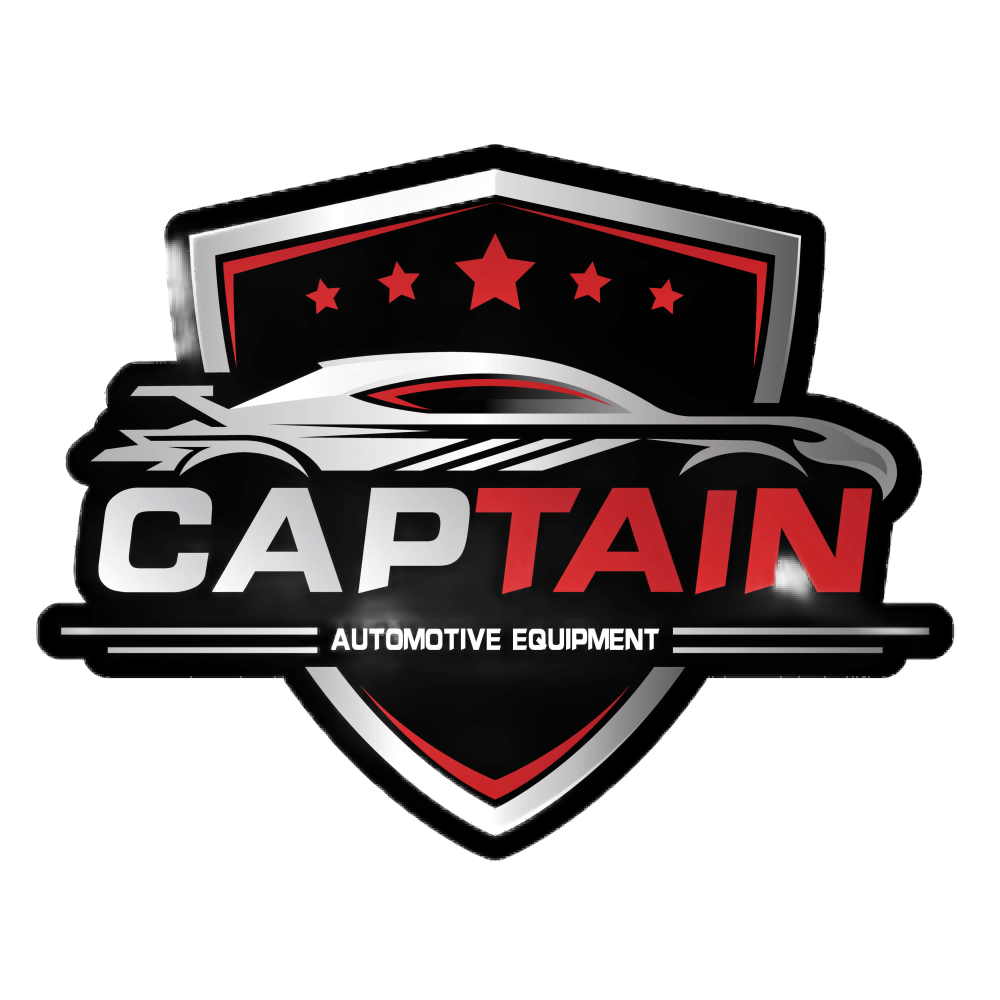การเข้าใจเกี่ยวกับเครื่องยกรถยนต์และความสำคัญของมัน
A ลิฟท์ยกรถ เป็นอุปกรณ์กลไกที่สำคัญในอู่ซ่อมรถยนต์ ออกแบบมาเพื่อยกยานพาหนะขึ้นจากพื้นดินสำหรับการบำรุงรักษา การตรวจสอบ และการซ่อมแซม อุปกรณ์นี้ช่วยให้ช่างเทคนิคสามารถเข้าถึงส่วนล่างของรถได้อย่างมีประสิทธิภาพ ซึ่งเป็นสิ่งสำคัญสำหรับงานที่ไม่สามารถทำบนพื้นได้ เช่น การตรวจสอบระบบไอเสียหรือการปรับแต่งล้อ หากไม่มีเครื่องยกรถยนต์ งานเหล่านี้จะยากและใช้เวลานาน แสดงให้เห็นถึงความจำเป็นของมันในอู่หรือศูนย์บริการใดๆ
มีหลายประเภทของเครื่องยกรถยนต์ แต่ละประเภทตอบสนองความต้องการเฉพาะและประเภทของยานพาหนะ เพื่อให้มั่นใจว่ามีกระบวนการทำงานที่ปลอดภัยและมีประสิทธิภาพ บางประเภทของเครื่องยกรถยนต์ที่พบบ่อยที่สุด ได้แก่:
ลิฟท์ 2 สตางค์
ที่รู้จักกันดีในเรื่องของการประหยัดพื้นที่ เหมาะสำหรับรถยนต์ขนาดเล็กถึงกลางที่ต้องการเข้าถึงฐานของยานพาหนะ
ลิฟท์สี่เสา
เหมาะสมสำหรับการเก็บรักษาระยะยาวและการบำรุงรักษาเป็นอย่างดี พวกมันให้เสถียรภาพและแรงสนับสนุนที่ยอดเยี่ยมสำหรับยานพาหนะขนาดใหญ่ ขอบคุณเสาเพิ่มเติมของพวกเขา
การยกเลื่อย
เหล่านี้เสนอวิธีแก้ปัญหาที่กะทัดรัดและหลากหลายสำหรับการซ่อมแซมอย่างรวดเร็ว และได้รับความนิยมในร้านที่มีพื้นที่จำกัด
Mobile Column Lifts
โดยเฉพาะอย่างยิ่งมีประโยชน์สำหรับยานพาหนะหนัก เช่น รถบรรทุกและรถบัส ช่วยให้เคลื่อนย้ายและวางตำแหน่งรอบๆ ยานพาหนะได้ง่าย
ลิฟต์แต่ละประเภทถูกออกแบบมาโดยคำนึงถึงข้อกำหนดเฉพาะ เช่น ขนาดและความสามารถในการรองรับน้ำหนัก เพื่อให้มั่นใจว่าความต้องการของการบริการยานยนต์ต่างๆ จะได้รับการตอบสนองอย่างปลอดภัยและมีประสิทธิภาพ
ขั้นตอนความปลอดภัยสำคัญในการใช้งานลิฟต์รถยนต์ในอู่ของคุณ
การปฏิบัติตามขั้นตอนความปลอดภัยที่สำคัญเป็นสิ่งสำคัญเมื่อใช้งาน ลิฟท์ยกรถ ในห้องปฏิบัติการของคุณเพื่อให้มั่นใจในความปลอดภัยของพนักงานและการใช้งานที่ยาวนานของเครื่องมือ เริ่มต้นด้วยการตรวจสอบความปลอดภัยอย่างละเอียดก่อนใช้งาน ซึ่งรวมถึงการตรวจสอบระบบไฮดรอลิกสำหรับการรั่วไหลที่อาจเกิดขึ้นและการยืนยันการทำงานของคุณสมบัติความปลอดภัยทั้งหมด การตรวจสอบเหล่านี้มีความสำคัญเพราะช่วยป้องกันอุบัติเหตุระหว่างการยก Inspection ประจำจะสามารถตรวจพบปัญหาได้เร็ว ทำให้ห้องปฏิบัติการของคุณทำงานได้อย่างราบรื่น
การวางตำแหน่งรถบนเครื่องยกเป็นมาตรการความปลอดภัยที่สำคัญอีกประการหนึ่ง ให้แน่ใจว่ารถยนต์ถูกจัดวางตรงกลางและน้ำหนักถูกกระจายอย่างเท่าเทียมกันบนแพลตฟอร์มของเครื่องยก การวางตำแหน่งนี้จะป้องกันอันตรายที่อาจเกิดขึ้น เช่น การพลิกหรือเคลื่อนตัวของรถยนต์เมื่อถูกยกขึ้น การใช้จุดยกที่ผู้ผลิตรถยนต์แนะนำจะช่วยให้ได้การวางตำแหน่งที่เหมาะสมที่สุด
สุดท้ายให้บำรุงรักษาและตรวจสอบเครนยกรถยนต์เป็นประจำเพื่อยืดอายุการใช้งานและเพิ่มความปลอดภัย การตรวจเช็คตามกำหนดเพื่อหาสัญญาณการสึกหรอ ซึ่งได้รับการเน้นย้ำโดยสถาบันเครนรถยนต์ (ALI) สามารถป้องกันอุบัติเหตุและทำให้อุปกรณ์อยู่ในสภาพการทำงานที่ดี หากพบปัญหาใด ๆ ให้แก้ไขทันที และนำเครนออกจากงานจนกว่าจะซ่อมเสร็จ เพื่อรักษาสภาพแวดล้อมการทำงานที่ปลอดภัย
ขั้นตอนสำคัญในการใช้งานเครนยกรถยนต์อย่างปลอดภัยในอู่
การดำเนินการ ลิฟท์ยกรถ การใช้งานอย่างปลอดภัยต้องปฏิบัติตามกระบวนการที่มีโครงสร้างอย่างดีเพื่อลดความเสี่ยงที่อาจเกิดขึ้นจากการใช้งาน ก่อนอื่น ให้แน่ใจว่าคุณสวมใส่อุปกรณ์ป้องกันส่วนบุคคล เช่น ถุงมือและแว่นตาป้องกันก่อนเข้าใกล้เครน Always conduct pre-use checks carefully, confirming that equipment like hydraulic systems is functioning correctly and free from leaks. การปฏิบัติตามคำแนะนำของผู้ผลิตเมื่อควบคุมเครนนั้นมีความสำคัญ因为它ช่วยให้มั่นใจว่าการกระทำจะดำเนินไปตามลำดับที่ถูกต้องและมีมาตรการป้องกันที่เหมาะสม เช่น การวางตำแหน่งเครนให้ถูกต้อง
การหลีกเลี่ยงข้อผิดพลาดทั่วไปเป็นสิ่งสำคัญในการป้องกันอุบัติเหตุระหว่างการยกรถยนต์ ควรแน่ใจว่าไม่มีการละเลยมาตรการความปลอดภัย—ซึ่งรวมถึงการยึดรถให้แน่นบนเครื่องยกเพื่อป้องกันการหลุดออกโดยไม่ได้ตั้งใจ เหตุการณ์หลายครั้งเกิดขึ้นเนื่องจากความประมาท เช่น ไม่ใช้ไม้รองล้อหรือละเลยขั้นตอนความปลอดภัยเล็กๆ น้อยๆ แต่สำคัญ นอกจากนี้ การไม่ปฏิบัติตามคำแนะนำในการใช้งานและการบรรทุกน้ำหนักเกินของเครื่องยกอาจนำไปสู่อุบัติเหตุร้ายแรงได้ เป็นสิ่งจำเป็นสำหรับเจ้าหน้าที่ในอู่ทุกคนที่จะต้องมีความรู้และปฏิบัติตามขั้นตอนความปลอดภัยที่กำหนดอย่างสม่ำเสมอ เพื่อรักษาสภาพของเครื่องมือและสร้างความปลอดภัยให้กับบุคลากร
แนวปฏิบัติหลังการใช้งานเพื่อความปลอดภัยและการบำรุงรักษา
หลังจากใช้เครนรถยนต์แล้ว การปฏิบัติตามขั้นตอนความปลอดภัยที่ถูกต้องขณะลดรถลงเป็นสิ่งสำคัญ ซึ่งรวมถึงการตรวจสอบให้แน่ใจว่าบุคลากรทุกคนอยู่นอกพื้นที่ของเครนและปฏิบัติตามขั้นตอนการลดลงที่แนะนำอย่างเคร่งครัด การปฏิบัติตามขั้นตอนที่ถูกต้องจะป้องกันไม่ให้เกิดการตกหรือกระชากที่กระทันหันซึ่งอาจทำให้เกิดอันตรายต่อทั้งรถยนต์และบุคคลที่อยู่ในพื้นที่ มาตรการด้านความปลอดภัย เช่น การใช้สัญญาณเตือนหรือกั้นเขต ก็สามารถลดความเสี่ยงได้อย่างมากเมื่อลดรถลง
การตรวจสอบหลังการใช้งานและการบันทึกข้อมูลอย่างละเอียดเป็นสิ่งสำคัญเพื่อคงสภาพและรักษาความปลอดภัยของเครนยกรถยนต์ การบันทึกการซ่อมแซม งานบำรุงรักษา และความเสียหายที่พบเห็นทั้งหมดช่วยให้สามารถติดตามสภาพของเครนยกได้อย่างต่อเนื่อง วิธีนี้ช่วยแก้ไขปัญหาอย่างรวดเร็วก่อนที่จะลุกลาม ทำให้มั่นใจในความปลอดภัยและความน่าเชื่อถือในการทำงานตลอดเวลา การตรวจสอบเป็นประจำยืนยันว่าเครนยกทำงานได้อย่างถูกต้อง ลดความเสี่ยงที่เกี่ยวข้องกับการล้มเหลวของอุปกรณ์ และเพิ่มประสิทธิภาพในการดำเนินงานของอู่ซ่อมรถยนต์
อุปกรณ์เสริมเพิ่มเติมเพื่อเพิ่มความปลอดภัยของเครนยกรถยนต์
เมื่อทำงานกับเครนยกรถยนต์ การใช้แท่นรองช่วยให้มีความปลอดภัยเพิ่มขึ้นเมื่อรถถูกยกขึ้นสูง แท่นรองเหล่านี้ช่วยเพิ่มความมั่นคงของรถยนต์ ลดความเสี่ยงของการพังทลายโดยไม่ตั้งใจระหว่างการทำงานซ่อมแซม คุณค่าของแท่นรองไม่ควรถูกละเลย โดยเฉพาะอย่างยิ่งในสภาพแวดล้อมที่ช่างเทคนิคทำการซ่อมใหญ่และต้องการความมั่นใจว่ารถยนต์ยังคงถูกยกขึ้นอย่างมั่นคง
กลไกการล็อกมีบทบาทสำคัญในการรักษาความปลอดภัยเมื่อยานพาหนะถูกยกขึ้น สิ่งเหล่านี้ช่วยให้แน่ใจว่าเครื่องยกรถจะคงที่อยู่ในตำแหน่ง โดยป้องกันไม่ให้รถลดระดับลงมาโดยไม่ตั้งใจ ซึ่งอาจนำไปสู่อุบัติเหตุร้ายแรงหรือความเสียหายได้ ไม่ว่าคุณจะทำงานในสถานที่ซ่อมรถยนต์แบบมืออาชีพหรือโรงรถ DIY การใช้โปรโตคอลความปลอดภัยที่แข็งแกร่งพร้อมกับอุปกรณ์ เช่น แท่นรองและกลไกการล็อกที่มีประสิทธิภาพเป็นสิ่งจำเป็น
การฝึกอบรมและการรับรองเพื่อการดำเนินงานเครื่องยกรถอย่างปลอดภัย
การฝึกอบรมเป็นองค์ประกอบสำคัญในการลดอุบัติเหตุที่เกี่ยวข้องกับเครื่องยกรถ บุคลากรที่ได้รับการฝึกอบรมอย่างเหมาะสมจะมีทักษะที่จำเป็นในการควบคุมเครื่องยกรถอย่างปลอดภัยและมีประสิทธิภาพ ซึ่งลดความน่าจะเป็นของความผิดพลาดลงอย่างมาก ผู้ปฏิบัติงานที่ได้รับการฝึกอบรมอย่างดีสามารถจัดการกับสถานการณ์ที่ไม่คาดคิดได้ดีกว่า ลดความเสี่ยง และสร้างสภาพแวดล้อมการทำงานที่ปลอดภัยขึ้นสำหรับทุกคนที่เกี่ยวข้อง
โปรแกรมการรับรองให้ภาพรวมที่ครอบคลุมเกี่ยวกับการปฏิบัติงานของเครนยกรถยนต์ โดยครอบคลุมถึงความรู้ทางทฤษฎีและทักษะเชิงปฏิบัติ โปรแกรมเหล่านี้ช่วยให้มั่นใจว่าผู้ปฏิบัติงานมีความรู้ในเรื่องข้อกำหนดด้านความปลอดภัยและเข้าใจกลไกของเครนยกแต่ละรุ่น หลักสูตรโดยทั่วไปจะรวมถึงข้อมูลรายละเอียดเกี่ยวกับการใช้งาน การบำรุงรักษา และข้อกำหนดด้านความปลอดภัย เพื่อให้แน่ใจว่าช่างเทคนิคได้เตรียมพร้อมอย่างเต็มที่ในการจัดการเครนยกรถยนต์อย่างรับผิดชอบ
อุปกรณ์เสริมเพิ่มเติมเพื่อเพิ่มความปลอดภัยของเครนยกรถยนต์
การใช้แท่นรองให้การป้องกันเพิ่มเติมเมื่อทำงานใต้รถที่ยกขึ้น โดยช่วยลดความเสี่ยงของการล่มลงระหว่างงานซ่อมแซม แท่นเหล่านี้ช่วยให้มั่นคงและปลอดภัยมากขึ้นด้วยการให้การสนับสนุนเพิ่มเติม ทำให้เป็นอุปกรณ์เสริมที่จำเป็นสำหรับการปฏิบัติงานเครนยกรถยนต์ใดๆ
ความสำคัญของกลไกการล็อกไม่สามารถเกินคำว่ามากไปได้; คุณสมบัติเหล่านี้มีความสำคัญในการรักษาตำแหน่งของกระบอกสูบยกขณะที่ยานพาหนะถูกยกขึ้น โดยการล็อกกระบอกสูบยก จะป้องกันการลดลงโดยไม่ตั้งใจ ซึ่งช่วยปกป้องทั้งยานพาหนะและผู้ปฏิบัติงาน การตรวจสอบให้แน่ใจว่ากลไกเหล่านี้ทำงานได้เป็นขั้นตอนสำคัญในการส่งเสริมความปลอดภัยของการใช้งานกระบอกสูบยก
สรุป: การเชี่ยวชาญการใช้งานกระบอกสูบยกรถยนต์อย่างปลอดภัยในอู่ของคุณ
ในที่สุด การเชี่ยวชาญการใช้งานกระบอกสูบยกรถยนต์อย่างปลอดภัยในอู่ของคุณเป็นสิ่งสำคัญสำหรับการรักษาสภาพแวดล้อมที่มีประสิทธิภาพและปราศจากอุบัติเหตุ การลงทุนในหลักสูตรการฝึกอบรมที่เหมาะสมและการปฏิบัติตามข้อกำหนดด้านความปลอดภัยจะทำให้ทีมของคุณสามารถดำเนินการกระบอกสูบยกได้อย่างมีประสิทธิภาพ รับรองความปลอดภัยของพวกเขาและความสำเร็จของการดำเนินงานของคุณ
คำถามที่พบบ่อย
ความสำคัญของการตรวจสอบความปลอดภัยของกระบอกสูบยกรถยนต์คืออะไร?
การตรวจสอบความปลอดภัยมีความสำคัญเพื่อป้องกันอุบัติเหตุโดยการระบุปัญหาที่อาจเกิดขึ้นก่อนที่จะเกิดขึ้นจริง พวกเขารับประกันอายุการใช้งานของอุปกรณ์และว่ากระบอกสูบยกทำงานอย่างปลอดภัยตลอดเวลา
ควรตรวจสอบการบำรุงรักษายกรถยนต์บ่อยแค่ไหน?
การบำรุงรักษาประจำควรดำเนินการตามคำแนะนำของผู้ผลิต แต่โดยทั่วไปควรมีการตรวจสอบอย่างน้อยเดือนละครั้งเพื่อตรวจพบและแก้ไขปัญหาการสึกหรอในระยะแรก
มีประเภทของเครื่องยกรถยนต์ที่พบบ่อยอะไรบ้าง?
ประเภทของเครื่องยกรถยนต์ที่พบบ่อยได้แก่ เครื่องยกแบบสองเสา เครื่องยกแบบสี่เสา เครื่องยกแบบกรรไกร และเครื่องยกแบบคอลัมน์เคลื่อนที่ ซึ่งแต่ละแบบเหมาะสำหรับขนาดรถและฟังก์ชันที่แตกต่างกัน
ทำไมการฝึกอบรมผู้ใช้งานจึงสำคัญสำหรับการใช้งานเครื่องยกรถยนต์?
การฝึกอบรมทำให้ผู้ใช้งานมีความรู้เกี่ยวกับการใช้งานเครื่องยกรถยนต์อย่างปลอดภัย ลดความเสี่ยงของการเกิดอุบัติเหตุและรับประกันการใช้งานอุปกรณ์อย่างปลอดภัยในห้องปฏิบัติการ
กลไกการล็อกมีบทบาทอย่างไรในความปลอดภัยของเครื่องยกรถยนต์?
กลไกการล็อกช่วยตรึงตำแหน่งของเครื่องยก ป้องกันไม่ให้รถถูกลดระดับลงโดยไม่ตั้งใจ ซึ่งเป็นสิ่งสำคัญสำหรับความปลอดภัยของผู้ใช้งานและรถยนต์
รายการ รายการ รายการ
- การเข้าใจเกี่ยวกับเครื่องยกรถยนต์และความสำคัญของมัน
- ขั้นตอนความปลอดภัยสำคัญในการใช้งานลิฟต์รถยนต์ในอู่ของคุณ
- ขั้นตอนสำคัญในการใช้งานเครนยกรถยนต์อย่างปลอดภัยในอู่
- แนวปฏิบัติหลังการใช้งานเพื่อความปลอดภัยและการบำรุงรักษา
- อุปกรณ์เสริมเพิ่มเติมเพื่อเพิ่มความปลอดภัยของเครนยกรถยนต์
- การฝึกอบรมและการรับรองเพื่อการดำเนินงานเครื่องยกรถอย่างปลอดภัย
- อุปกรณ์เสริมเพิ่มเติมเพื่อเพิ่มความปลอดภัยของเครนยกรถยนต์
- สรุป: การเชี่ยวชาญการใช้งานกระบอกสูบยกรถยนต์อย่างปลอดภัยในอู่ของคุณ
- คำถามที่พบบ่อย

